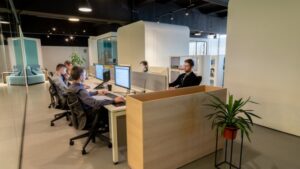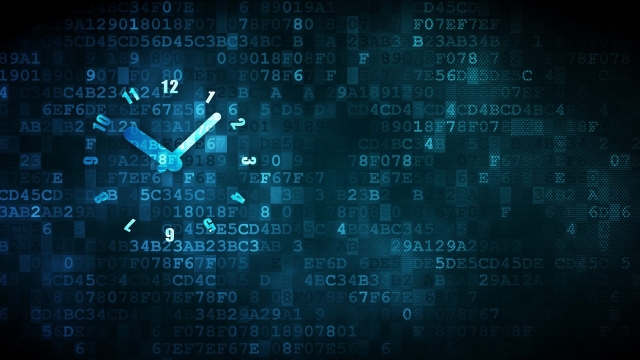In today’s fast-paced work environment, managing attendance efficiently is crucial for any organization. As businesses strive to optimize productivity and maintain accurate records, clocking in machines have emerged as a transformative solution. These innovative devices streamline the process of tracking employee attendance, ensuring that every minute worked is accounted for.
Gone are the days of manual sign-in sheets and time clock fraud. With the rise of clocking in machines, companies can now harness technology to enhance their operational efficiency. From biometric systems that use fingerprint recognition to digital terminals with contactless options, these devices are revolutionizing how businesses monitor attendance, leading to improved accuracy and accountability in the workplace.
The Evolution of Clocking In Machines
Clocking in machines have seen a remarkable transformation since their inception. Originally, attendance was recorded manually, often relying on paper time sheets and punch cards. Employees would mark their arrival and departure times with simple tools such as a pencil or a stamp. This method, while functional, was prone to inaccuracies and manipulation, leading to inefficiencies in payroll processing and attendance tracking.
As technology advanced, so did the approach to managing employee attendance. The introduction of mechanical time clocks in the early 20th century simplified the process by using a physical punch card system. Employees would insert their cards into the machine, which would then stamp the time, creating a more reliable and auditable record. This shift not only increased accuracy but also provided employers with an effective way to enforce attendance policies.
The late 20th century marked another significant evolution with the advent of electronic clocking in machines. These devices utilized digital technology to streamline the clocking process, allowing employees to check in with a simple swipe of a card or a fingerprint scan. This innovation not only enhanced security but also facilitated real-time data collection and integration with payroll systems. As businesses recognized the importance of precise attendance tracking, clocking in machines became essential tools in the modern workplace.
Benefits of Modern Attendance Systems
Modern attendance systems, including clocking in machines, significantly enhance accuracy in tracking employee hours. Traditional methods often rely on manual logs or punch cards, which can lead to errors and time theft. With automated clocking in machines, businesses can ensure precise recording of attendance, reducing discrepancies and promoting fairness in wage calculations. This level of accuracy not only benefits employees, but also helps organizations maintain compliance with labor regulations.
Another important benefit is the increase in operational efficiency. Clocking in machines streamline the attendance process, minimizing the time spent on managing attendance records. Employees can quickly clock in and out without the need for lengthy manual entry or verification processes. This efficiency translates to more time for managers and HR personnel, allowing them to focus on strategic initiatives rather than administrative tasks.
Moreover, the integration of modern clocking in machines often includes advanced features such as biometric scanning and software analytics. These technologies provide businesses with valuable insights into attendance patterns, absenteeism, and workforce productivity. By analyzing this data, employers can make informed decisions to enhance workforce management, optimize schedules, and implement improvements that foster a more engaged and committed workforce.
How Clocking In Machines Improve Productivity

Clocking in machines streamline the attendance process, eliminating the time-consuming manual logging that can lead to errors and inefficiencies. With these automated systems, employees can quickly record their arrival and departure times, reducing the delays associated with paper forms or traditional timecards. As a result, staff can spend more time focused on their tasks rather than managing attendance, which ultimately contributes to an increase in overall productivity. In today’s fast-paced work environment, managing attendance efficiently is crucial for any organization, and many are turning to HR Time Recording Systems to optimize productivity and maintain accurate records.
Moreover, clocking in machines often come equipped with features that allow for real-time data collection and reporting. This instant access to attendance metrics enables managers to identify trends, such as peak arrival times or excessive tardiness, allowing for better resource allocation and workforce planning. The ability to make informed decisions based on accurate data helps organizations optimize their operations, ensuring that they have the right number of employees available when needed.
Additionally, the use of clocking in machines fosters a sense of accountability among employees. When individuals know that their attendance is being tracked more closely, they tend to be more punctual and committed to their work schedules. This cultural shift not only enhances individual performance but also promotes a collective work ethic, further driving productivity and contributing to a more efficient workplace environment.
Integration with HR Software
Integrating clocking in machines with HR software is a game-changer for workforce management. This seamless connection allows for real-time data transfer, enabling employers to have immediate access to attendance records without manual input. The automated process reduces the chances of errors that often arise from manual timekeeping, ensuring that payroll calculations are accurate and timely. With this integration, organizations can also track employee hours and attendance trends effortlessly.
Moreover, these integrations enhance the functionality of HR software by providing comprehensive analytics. HR managers can analyze attendance data to identify patterns, such as frequent tardiness or absenteeism, which can help in making informed decisions about staffing and resource allocation. The data can also drive performance reviews by correlating attendance with productivity levels, fostering a more data-driven culture within the organization.
Lastly, the convenience of having clocking in machines integrated with HR software supports compliance with labor laws. Accurate records of hours worked are essential for meeting legal requirements and avoiding penalties. By streamlining the attendance process through this integration, companies can ensure that they are adhering to regulations while also promoting transparency and trust among employees. This not only enhances operational efficiency but also boosts employee morale, knowing that their time is accurately tracked and managed.
Future Trends in Attendance Technology
As businesses continue to evolve in a digital landscape, clocking in machines are expected to integrate more advanced technologies. Biometric recognition systems, such as fingerprint scanners and facial recognition software, are likely to become standard features. These innovations not only ensure accurate identification but also enhance security by reducing the possibility of buddy punching, where one employee clocks in for another.
Another significant trend is the emergence of mobile clocking solutions. With the proliferation of smartphones, many organizations are looking to implement mobile applications that enable employees to clock in and out remotely. This flexibility supports remote work arrangements and can lead to higher employee satisfaction. Furthermore, GPS tracking integrated into these mobile solutions can verify employees’ locations when logging in, offering an additional layer of accountability.
Finally, the use of artificial intelligence and data analytics will transform how attendance data is used. By analyzing clocking in patterns and attendance behaviors, companies can identify trends that inform workforce management strategies. Such data-driven insights could facilitate better scheduling, reduce overtime costs, and optimize workforce productivity, thereby revolutionizing how attendance is tracked and managed in the workplace.
















